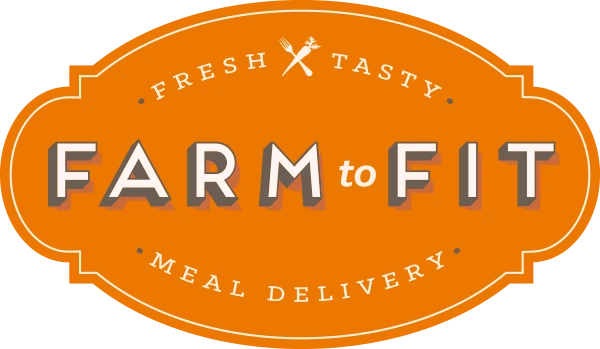How Keto and Paleo Diets Really Differ?
Posted on

In recent years, both the Keto and Paleo diets have gained immense popularity among health enthusiasts and those looking to improve their dietary habits. While they share some similarities, these diets are fundamentally different in their approach, principles, and benefits.
This blog aims to delve into the key differences between the Keto and Paleo diet meal plan, helping you make an informed decision about which one might be best suited for your health goals and lifestyle.

What is the Keto Diet?
The ketogenic diet, commonly known as the Keto diet, is a high-fat, moderate-protein, and low-carbohydrate diet. The primary goal of this diet is to induce a metabolic state called ketosis, where the body burns fat for fuel instead of carbohydrates.
Key Principles
- Macronutrient Ratio: The typical macronutrient breakdown for the Keto diet is approximately 70-75% fat, 20-25% protein, and 5-10% carbohydrates.
- Focus on Healthy Fats: The diet emphasizes the intake of healthy fats such as avocados, nuts, seeds, and olive oil.
-
Restricted Carbohydrate Sources: Grains, sugars, and most fruits are heavily restricted to maintain the low-carb requirement.
Benefits
- Weight Loss: Many people experience significant weight loss on the Keto diet due to the body’s ability to burn fat for energy.
- Improved Mental Clarity: Ketosis is believed to enhance brain function and clarity.
- Enhanced Energy Levels: By stabilizing blood sugar levels, the Keto diet can lead to more consistent energy throughout the day.
-
Therapeutic Effects: The diet has shown potential benefits for conditions like epilepsy and type 2 diabetes.
Potential Drawbacks
- Keto Flu: Some individuals experience flu-like symptoms during the initial phase of ketosis.
- Nutrient Deficiencies: The restrictive nature of the diet can lead to deficiencies in certain nutrients.
-
Sustainability Concerns: The strict guidelines can be challenging to maintain long-term.
 What is the Paleo Diet?
What is the Paleo Diet?
The Paleo diet, also known as the Paleolithic or Caveman diet, is based on the eating habits of our Paleolithic ancestors. It emphasizes whole, unprocessed foods that would have been available in pre-agricultural times.
Key Principles
- Emphasis on Whole Foods: The diet includes lean meats, fish, fruits, vegetables, nuts, and seeds.
-
Exclusion of Processed Foods: Grains, legumes, dairy, and refined sugars are avoided.
Benefits
- Weight Loss: The diet’s emphasis on whole, unprocessed foods can lead to weight loss.
- Improved Blood Sugar Levels: By eliminating refined sugars and processed foods, the Paleo diet helps in stabilizing blood sugar.
- Reduced Inflammation: Many report reduced inflammation and associated symptoms.
-
Better Digestion: The focus on fiber-rich fruits and vegetables supports digestive health.
Potential Drawbacks
- Restrictive Nature: Excluding entire food groups can be challenging and may lead to feelings of deprivation.
- Nutrient Deficiencies: Avoiding grains & dairy can result in deficiencies in certain nutrients like calcium and vitamin D.
-
Possible Nutrient Deficiencies: The exclusion of entire food groups can lead to deficiencies in certain nutrients.
Comparing Keto and Paleo Diets

Macronutrient Composition
- Keto: High fat, moderate protein, low carb
-
Paleo: Moderate protein, moderate fat, low to moderate carb
Food Choices
- Keto: Focus on fats, restricts carbs
-
Paleo: Emphasis on whole foods, excludes processed foods, grains, legumes, dairy
Health Benefits
- Keto: Induces ketosis, aids in weight loss, improves mental clarity, offers therapeutic effects
-
Paleo: Promotes weight loss, stabilizes blood sugar, reduces inflammation, improves digestion
Potential Challenges
- Keto: Adaptation to ketosis, sustainability, potential nutrient deficiencies
-
Paleo: Restrictive nature, nutrient deficiencies, exclusion of food groups
Which Diet is Right for You?
Considerations
When deciding between the Keto and Paleo diets, consider your health goals, lifestyle, and personal preferences. Think about your dietary restrictions and any allergies you may have.
Personalizing Your Diet
Combining elements of both diets might work for some individuals. For example, you can focus on whole foods while maintaining a low-carb intake. Consulting with a healthcare professional or a dietitian can help you tailor a diet plan that suits your needs.
Conclusion
Understanding the key differences between the Keto and Paleo diets can help you make an informed choice that aligns with your health goals and lifestyle. While both diets have their unique benefits and challenges, the right choice depends on your individual needs and preferences.
You can explore our menu and place orders online at www.farmtofit.com. I hope you enjoy it...
